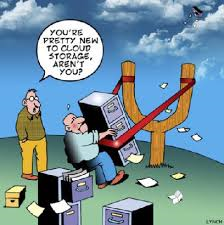TAG Blog

THE CLOUD: explained
The cloud is not a physical thing. It is a network of servers, and each server has a different function. Some servers use computing power to run applications or “deliver a service.”
For example, Adobe recently moved its creative services up in the air. You can no longer buy the Creative Suite (Photoshop, InDesign, etc.) in a box set. Instead, you must pay a monthly subscription fee to use each individual service. That’s why it’s now called the “Adobe Creative Cloud” instead. For example, when you take a picture on your smartphone, it is stored on your phone’s internal memory drive. However, when you upload the photos to Instagram, you are uploading it “up in the air”.
What are the benefits to working in the cloud?
The business decision to “move up to the sky” is often financially motivated. Companies used to have to buy their own hardware equipment, the value of which depreciated over time. But now, companies only have to pay for what they use. This model makes it easy to quickly scale use up or down. That’s why it is such a big deal. It also helps companies save thousands of dollars a year.
Is It Secure?
It is great for storing non-sensitive information, like to-do lists on platforms like Evernote. But unsurprisingly, the idea of storing personal information somewhere “up in the cloud” makes many people wary. Some companies, like Google, are responding to this worry accordingly. Google recently announced it would automatically encrypt data for paid cloud storage service users. If you’re looking to lessen your use of it, check out this guide on “6 Ways to De-Cloud and Avoid Tracking.” More here.





